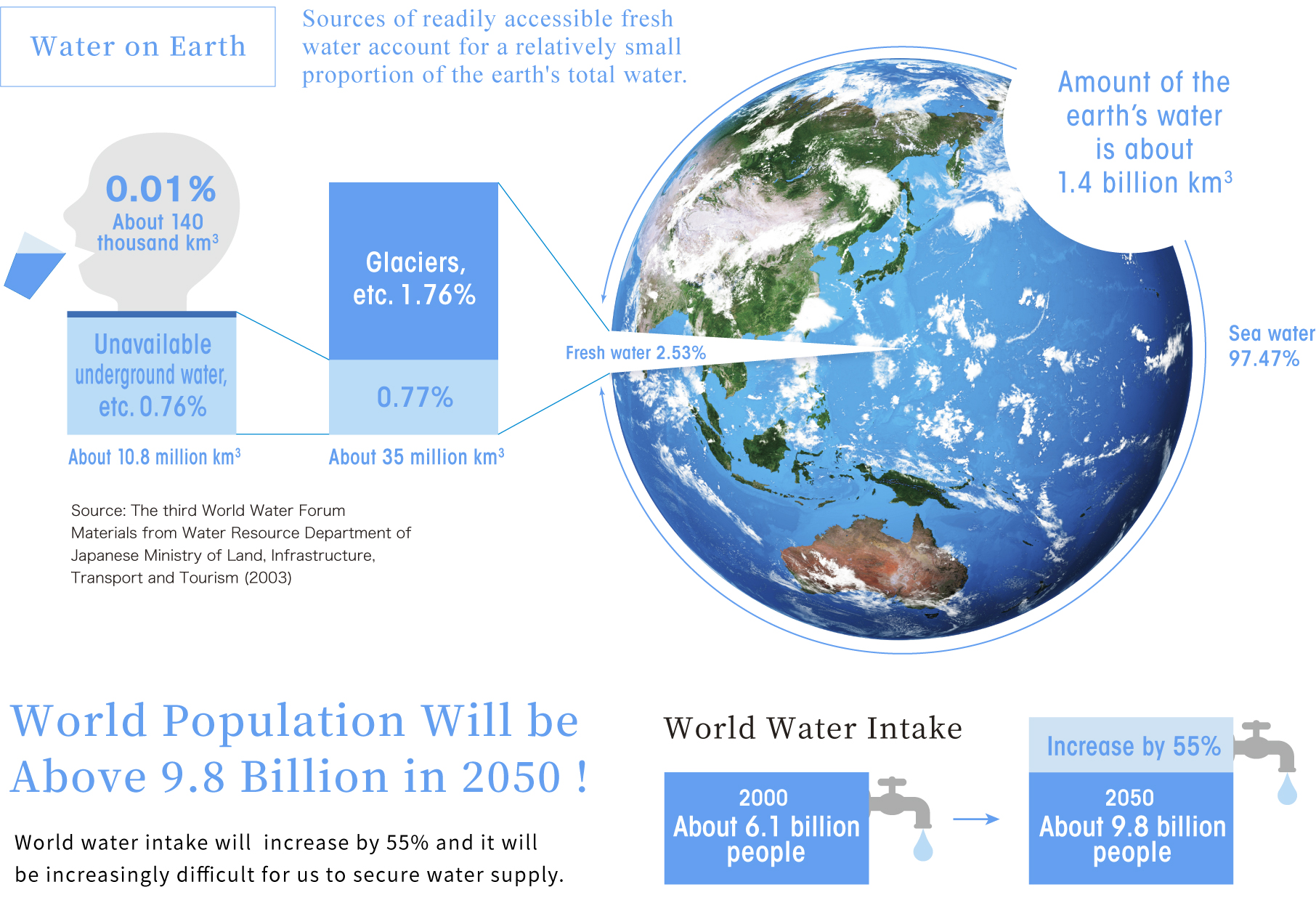Improving the "Quality of Life" (QOL)
of People Around the World
by Realizing a Cycled Water Society
The Circumstance Regarding
Water in the World?
With the world population exceeding 9.8 billion people in 2050,
there will be difficulties securing the water necessary to maintain
a prosperous living environment.

1.
Currently, 2.2 billion people around the world do not have access to safe drinking water,and more than 800 million people are threatened with food shortages due to insufficient availability of agricultural water.
*1 Progress on drinking water, sanitation and hygiene: 2000-2017: Special focus on inequalities (JMP)
*2 The State of Food Security and Nutrition in the World 2019 (FAO)
2.
New technologies for recycling water to solve global environmental issues are needed to secure water necessary for economic development, such as industrial use and resource development, wastewater treatment, and water pollution from resource production.
3.
The water crisis is raised as an issue due to the ever-growing imbalance between supply and demand. From a global perspective, water is distributed unevenly, a problem compounded by the unevenly distributed population.
4.
Seawater and brackish water are attracting attention as water sources to make up for water shortages, however, cost reduction and energy saving remain the biggest issues in the desalination of seawater and brackish water.
5.
Useful resources are in brine and seawater, and international interest, competition of collecting resources in the hydrosphere are increasing.
6.
Existing water systems did not incorporate the natural water cycle. Therefore, regional systems require open systems that work synergistically with local water systems.


Quality and Quantity Balance Required for Water
Water is essential for humankind, but most of the water on earth is in seawater or glaciers, unavailable due to structural and geographical issues.
Just 0.01% of the total, 140,000 km³, is available as freshwater.

出典: 平成30 年度水循環白書( 内閣官房水循環施策本部事務局)
In many countries and regions, tap water is required to maintain high quality for human consumption,
however, this same tap water is used widely for industrial and agricultural purposes.
The demand for safety with drinking water is strong, and even the slightest odors and contamination
with harmful substances can cause anxiety and discontent.
On the other hand, agricultural and industrial water, which account for 90% of the water used,
do not need to be as good as drinking water.
The water shortage is serious and it is feared that it will continue to become more difficult to secure water due
to the increase in the world population.
The world population is expected to exceed 9.8 billion in 2050, and this significant increase
in population and economic development will accelerate the water crisis.
For this reason, it is important to secure the quantity and quality of water for each application.
To solve these global water problems, Shinshu University Aqua Innovation Center is developing technologies and systems that can provide safe and reasonably priced water from various water sources such as seawater, wastewater, and surface water with a minimal environmental impact. The goal is for its commercialization.